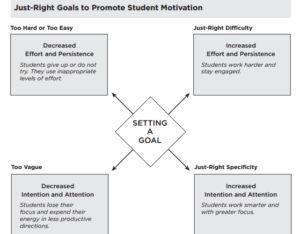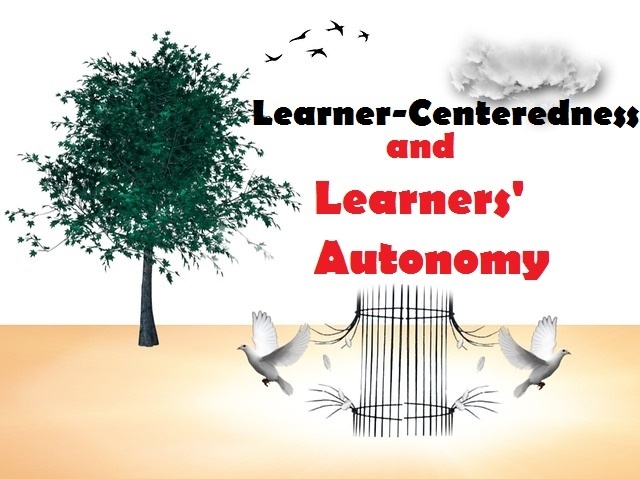Goal setting skills
Here are a few ideas on how to help your students become goal setters.
It is a common belief that students achieve well when they are actively involved in the learning process. No teachers would deny that having fully engaged and self-regulated learners in the classroom is not one of their biggest challenges. Students become active in their learning when their teachers focus on developing their self-regulated learning and goal-setting skills. Even though some of these skills seem to be advanced, but they are fundamental to the learning process.
Today, there is a substantial amount of research evidence that supports the positive effects of goal setting and self-regulation skills on academic achievement (Dotson, R., 2015; Marzano, R., Pickering, D., & Pollock, J., 2001), yet a lot of teachers find it hard to teach students to be goal setters and self-regulated learners. In so many schools and classrooms, there are students who have no clue about where they are heading, what to do, and how to do it. This, as a result, limits their potential and learning possibilities.
What is goal setting?
Goal setting is a process in which students set goals about their learning. These goals are usually guided by questions such as: where am I going? Where am I now? What do I have to do? And what techniques will I use to get there? Teachers play a significant role in helping students set goals. They can use the outcome of formative assessment to help their learners find areas of weakness and plan accordingly.
What is the relationship between goal setting and students’ learning?
High achievers are goal setters simply because they can easily identify what they should learn and how they should learn it whereas low achievers struggle a lot. They don’t know where to start. Goal setting affects students learning in so many ways. Firstly, it helps students focus on what they need to do: specific learning targets. Secondly, it helps students increase their motivation, resilience, and persistence. Thirdly, it helps students develop new strategies of learning – learning how to learn. As students try to achieve their goals, they will make decisions about the best ways that work for them.
Goal setting helps learners to be energized and motivated to learn, become focused, become attentive, and know how to move from the current level to the desired level.

How teachers can help students become goal setters
Goal setting is a strategic way that needs to be planned for and taught to students. It doesn’t happen just like that. Basically, it takes a lot of time. It requires teachers to scaffold their learners and model the steps of the goal-setting process.
Step 1: SMART goal setting
At this stage, students should be able to set short-term goals. As a way to start, students must focus on short-term goals because they will become motivated to achieve them. Teachers play an important role in helping students identify the areas of weakness and set goals. To focus more on learning targets, teachers can use the outcome of formative and continuous assessment to guide the goal-setting process. Teachers should also model and monitor the whole process. Teachers will have to teach students that goal setting requires a lot of commitment and resilience.
When students have a clue about goal setting, teachers can introduce the SMART goal setting approach. Students will have to learn to set goals that are specific, measurable, attainable, realistic, and timely. Students will be able to set well-defined and clear goals. For example, I need to focus on my writing skills – sentence structure. Students should be able to identify the amount of time they need to achieve their goals. This will encourage them to work quicker.
Students have to make their goals measurable. In other words, they have to break them down so they can measure their degree of progress and success. Let us go back to the example above. A student who sets a goal which is working on sentence structure because s/he still has problems can categorize this into areas of focus for example (simple, complex, and compound sentences) and then work on each area. Without breaking learning goals, students won’t know how much they still have to address. It will be vague.
Teachers have to make sure that students’ goals are independently attainable. Teachers want to encourage student-centered goal setting, they have to monitor students and make sure the goals are up to a certain degree of challenge but not too difficult to accomplish. This will boost students’ confidence. Students should know the deadline and how much time they need to accomplish their goals which have to be time-bound
Step 2 – selecting the best strategy
This is one of the most important steps in goal setting. Teachers will have to make sure that their students are focusing more on the process than the outcome. Students should know HOW to address the issue. They will have to decide whether to work individually or with others, what tools to use, how to get support, the pace of working on the goal…etc.
Step 3 – assessing performance
At this stage, students will have to assess how far they have gone. The first time teachers will have to kick in and monitor students’ performance. However, at a later time, students will have to do it individually. They have to be equipped with skills and strategies to do it. If students can measure their progress individually, they will become motivated and feel responsible and in control of their own learning. if they succeed, they will attribute it to their abilities and efforts which will significantly impact their self-esteem and confidence.
Step 4 – stick with it.
Teachers should keep reminding students that goal setting is an ongoing process that should be part of their lives.
References:
Susan, B. & Connie, M. 2009. Advancing Formative Assessment In Every Classroom. Alexandria, Virginia.







